1
What do I need to know how to do?
What Tools do I need?
First, verify that your components are tubeless compatible. See Tubeless Tire Compatibility for more information on tubeless tire standards.
3
There are two main methods for adding sealant to the tire:
This method requires a measuring cup. An air compressor is highly recommended.
This method requires a valve with a removable valve core, a syringe, and an air compressor.

Sealant seeping through the tire bead
The rim strip on this wheel was not adequately sealed. Sealant may, in time, create a seal
4
In general, punctures in tubeless tires cannot be repaired. Punctures in UST tubeless tires, and other tubeless tires with a butyl inner lining, can potentially be repaired using a vulcanizing patch kit such as the VP-1.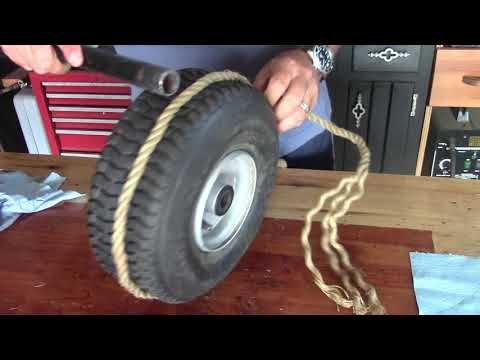 It is not recommended that you attempt to use other types of patches, or attempt to repair other types of tubeless tires.
It is not recommended that you attempt to use other types of patches, or attempt to repair other types of tubeless tires.
See Inner Tube Repair for instructions on using a vulcanizing patch kit.
Nothing could be worse than going for a ride, slamming into the curb or a rock, and getting stranded on the side of the road with a flat tire. For this reason, many cyclists prefer to use tubeless tires. They’re less susceptible to punctures and even create a smoother riding experience. Yet, removing a tubeless tire isn’t quite as straightforward—you’ll need to use a special process.
Tubeless tires are held in place by a bead seat that creates a tight seal, holding air inside. To remove a tubeless tire, you’ll first have to deflate any air from the tire and then break the bead seal. From there, you should be able to pull the tire off of the rim. If the tire is particularly stubborn, you can try using a tire changer.
In this guide, we’ll explain how to remove tubeless tire. This includes how to remove tubeless tire without any special tools, as well as how to remove tubeless tire using a special tire changer. We recommend following these steps carefully to avoid damaging your tires, wheel, or bicycle in general.
This includes how to remove tubeless tire without any special tools, as well as how to remove tubeless tire using a special tire changer. We recommend following these steps carefully to avoid damaging your tires, wheel, or bicycle in general.
Tubeless tires are a type of bicycle tire that doesn’t require an inner tube. They’re held in place by a bead seat, which is a type of rim that’s designed to create an airtight seal. This seal prevents air from escaping, even if there’s a puncture in the tire.
Tubeless tires have several advantages over traditional tires, making them an ideal choice for most road cyclists. First off, they’re less susceptible to flats, since there’s no tube for a sharp object to puncture. They also tend to be lighter, since they don’t require an inner tube and some riders find that they provide a smoother ride.
Of course, there are some disadvantages to tubeless tires as well. They can be more difficult to install since you have to create an airtight seal and they can also be more expensive. Nevertheless, once you learn how to remove tubeless tire, you’ll be able to fix your bike without spending quite as much.
Nevertheless, once you learn how to remove tubeless tire, you’ll be able to fix your bike without spending quite as much.
If you’ve never changed the tires on your bicycle, you may not know whether you’re riding with tubeless tires. Fortunately, it’s relatively easy to tell. Start by taking a close look at your rims. If they have a hole in the center, they’re not tubeless. If they don’t have a hole in the center, they may be tubeless.
You can also tell by looking at the tires themselves. Tubeless tires will have a thicker bead, while traditional tires generally have a thinner bead. You may also notice that tubeless tires have a different tread pattern than traditional tires.
Finally, if you are still not sure whether your tires are tubeless, just take a look at the sidewall of the tire. It should say “tubeless” or “tubeless-ready.” If it doesn’t say either of those things, you have a traditional tire. Assuming that you have a tubeless tire, you can move on to the next section to learn how to remove tubeless tire.
Ideally, you should use a special tire-changing tool to remove your tubeless tire. However, if you don’t have one, you can still remove the tire by hand. The process is a little more difficult, but it’s still manageable with some patience. Just follow these steps:
 With the lever in place, then use it to pry the bead of the tire over the edge of the rim. You may need to use multiple tire levers to get the job done.
With the lever in place, then use it to pry the bead of the tire over the edge of the rim. You may need to use multiple tire levers to get the job done.After you’ve successfully removed the tire, you can proceed down to the bottom where you can learn how to install a new tire.
If you don’t have a tire changer, you can remove your tubeless tire by hand. However, the process is much easier if you have a tire changer. These devices are specifically designed to remove tubeless tires without damaging them. To use a tire changer, follow these quick steps:
 You can do this by using a bike pump to release the air from the tire. Alternatively, you can simply depress the valve using a nail or a small screwdriver. Gently squeezing the tires will help push out more air.
You can do this by using a bike pump to release the air from the tire. Alternatively, you can simply depress the valve using a nail or a small screwdriver. Gently squeezing the tires will help push out more air.Once you’ve removed the tire, you can proceed to the next section to learn how to install a new tire. This process is more involved than simply removing a tubeless tire but, with time, you’ll be able to quickly change your bike’s tubeless tires without hassle.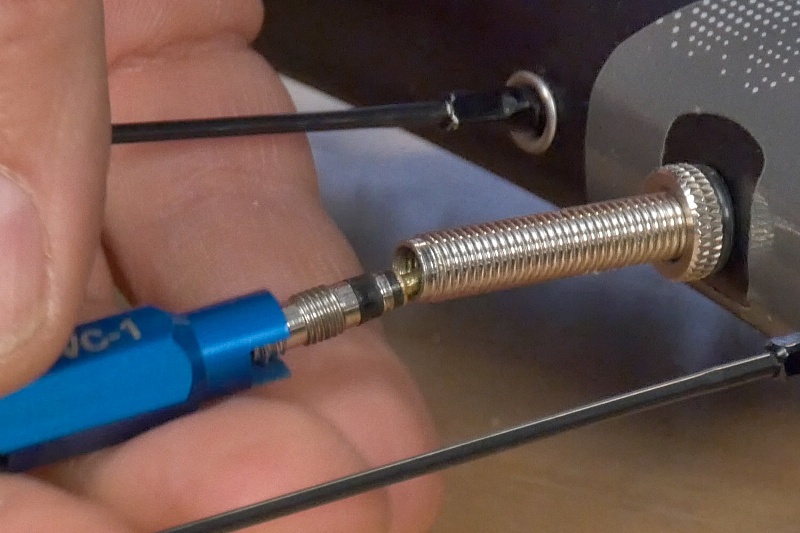
Tubeless tires might last longer than traditional tires but they’re quite a lot harder to replace. You’ll need some special equipment to reseal your tire back onto the bead seat. Before you get started make sure to have:
Some professional bike shops might use a sealant injector system but this isn’t really necessary and could set you back quite a lot of money. Instead, just use a small paintbrush and a careful had to apply the necessary sealants. Once you have the necessary equipment, you can then start reinstalling a new tubeless tire by following these steps:
 You should cut the tape to size and then apply it to the rim, making sure that it’s properly positioned.
You should cut the tape to size and then apply it to the rim, making sure that it’s properly positioned.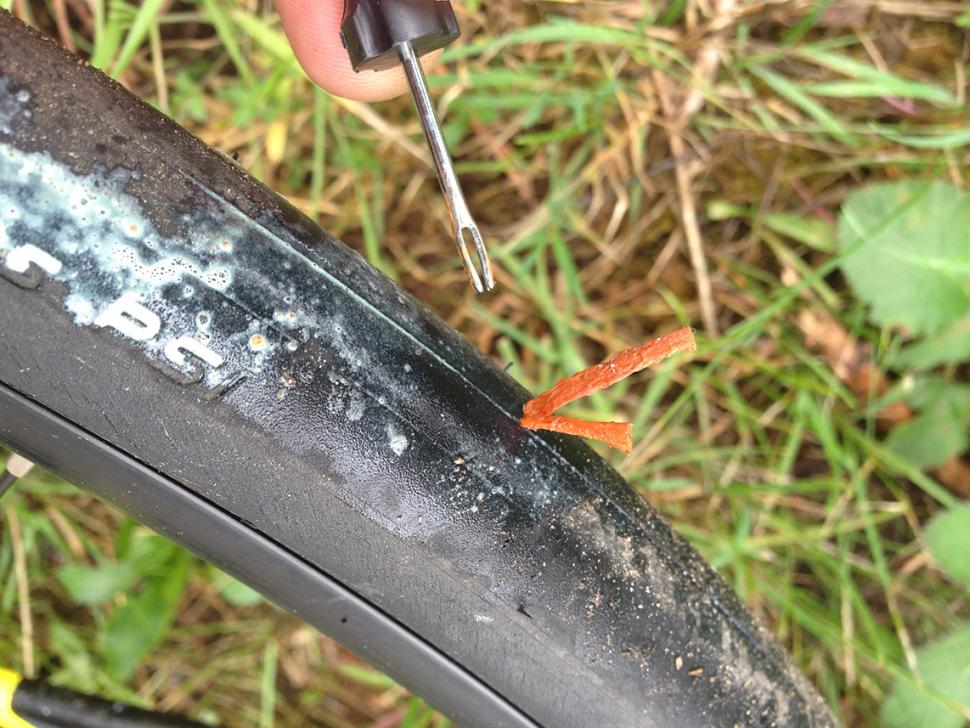 You should apply an even layer, making sure to get the sealant into the tire’s sidewalls.
You should apply an even layer, making sure to get the sealant into the tire’s sidewalls.With time, you should be able to quickly install a new tubeless tire. Just make sure that you have the necessary equipment and take your time to avoid making any mistakes.
Is J Bike Store Legit? (All You Need To Know)
There are a lot of online retailers that sell bikes, but if you’re after the latest models, then you want to be wary of websites that are offering bikes for significantly below the going market. ..
..
Continue Reading
link to 30 Vs 32 Chainring? (Which one I would Choose)30 Vs 32 Chainring? (Which one I would Choose)
A common question regarding mountain biking is, will a new chainring make my life easier when I'm out enjoying the trails? When the question 30 vs 32 chainring is asked, to some, there isn't much of...
Continue Reading
Mounting and dismantling of tires is now cleverly done in the tire shop. And, some 30 years ago, the drivers themselves were engaged in repairing the wheels. For the “experienced”, disassembling a tubeless wheel is not difficult. But what about those who have no repair experience, and in a traffic situation there is no other way out? Such drivers should study the theory of self-breakdown. The acquired knowledge can be put into practice.
Wheel stripping is the process of removing a tire from a rim. To disassemble the wheel, it may be necessary to replace the rubber with a new one, or in the case of an off-season “change of shoes”. And sometimes, you need to disassemble the wheel to repair a tire or disc. The most common are two methods of dismantling.
And sometimes, you need to disassemble the wheel to repair a tire or disc. The most common are two methods of dismantling.
One of the oldest methods still used by truck drivers. During the operation of the wheels, the tire bead is "welded" to the seat on the disk. This phenomenon is especially common with tubeless tires. In this case, it is possible to separate two elements that have become attached to each other by hitting a wedge with a sledgehammer. A wedge is a piece of steel thick corner with machined ends so as not to tear the rubber. After a series of blows, the tire and disc are separated.
In this case, weights must be used. The method is more humane, since it harms the rubber and the disk less (it is not always possible to accurately hit the corner with a sledgehammer). For weight, it is possible to use the mass of the car or your own body. In the second case, in order to increase the pressure, you will have to use a lever structure (pipe or board).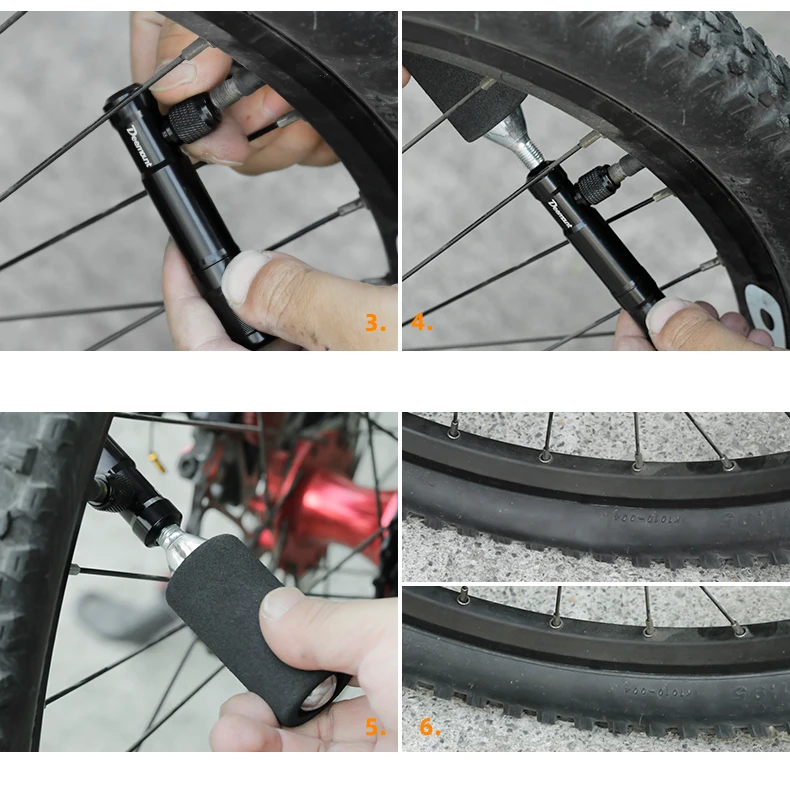
Tires with tubes stick less often (except for truck wheels). Therefore, it is enough to bleed the remaining air, clean the wheel of dirt and start dismantling. Tubeless tires stick a lot. Therefore, a few hours before disassembly, it is recommended to apply a decoking spray, for example, WD-40, to the stuck place. It is also possible to pour a little vinegar on the connection, as professional drivers used to do in the old days.
To disassemble the wheels at home, it is necessary to prepare the tools. First of all, these are mounting blades 2-3 pieces. For the shock method, you will need a sledgehammer and 1-2 corners. In the case of shockless technology using the weight of the car, you will need: a jack and pieces of boards. Consider the case on the road. The steps are as follows:
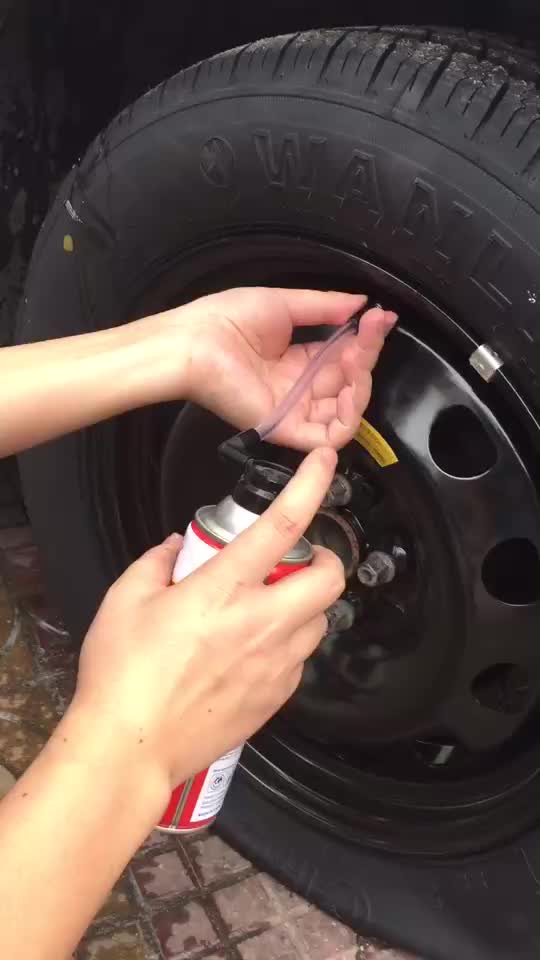 We fix the position with the foot. With the second spatula we pry the tire bead and take out the edge of the rubber from the disk, and so on;
We fix the position with the foot. With the second spatula we pry the tire bead and take out the edge of the rubber from the disk, and so on; Before disassembly, it is recommended to inspect the mounts for chips and burrs. Sharp edges can damage the disc and tire. Never use crowbars or nail pullers. Their sharp edges are guaranteed to tear the tire bead.
Another option is how to disassemble a tubeless wheel yourself using a rack and pinion jack. We tie the edge of the lifting platform to the disk with a wire or cable, and rest its heel against the tire. We raise the disk. In the process of work, we gradually move the jack along the perimeter of the tire. However, this option is dangerous. If the connection breaks, the structure will shatter.
Assembling a tubeless wheel is easy. A few movements with the shoulder blades, and the tire is in place. But, how to pump up such a cylinder, because the tire bead does not have an airtight connection? This will require high air pressure, which will quickly expand the rubber. The compressor will supply the necessary pressure. But in the field there is no compressor. There is an exit.
A few movements with the shoulder blades, and the tire is in place. But, how to pump up such a cylinder, because the tire bead does not have an airtight connection? This will require high air pressure, which will quickly expand the rubber. The compressor will supply the necessary pressure. But in the field there is no compressor. There is an exit.
It is possible to apply two types of pumping. The first is the use of flammable liquids. Pour some gasoline inside the wheel, step back and set it on fire. Hot air will instantly expand the rubber. The second option is a radial tire tie. Wind the towing cable around the protector and twist it with a mount. The tire will expand. Its edges will press against the disk. After that, you can inflate the tire with a foot / hand pump and remove the bandage.
Before you try to disassemble the wheel with your own hands, you should take care of the tool. Keep a couple of mounting spatulas in stock, they can come in handy on the road. The rest: a jack, a pump and a tow rope should always be in the trunk.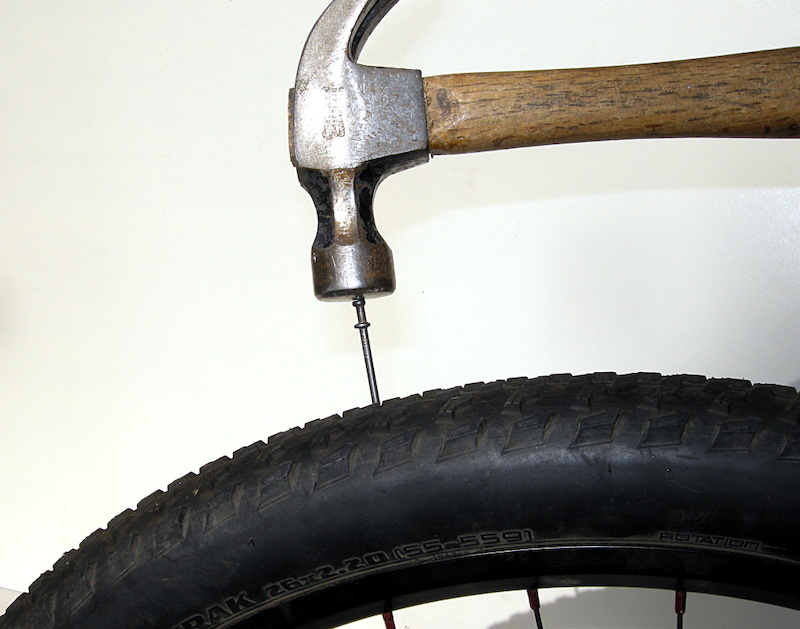 As can be seen from the material of the article, the disassembly operation can be carried out with an improvised tool.
As can be seen from the material of the article, the disassembly operation can be carried out with an improvised tool.
Content
Each car collided each car with such a problem as punctured wheels. This is a nuisance that can completely change plans if caught on the way. Not everyone knows how to manually disassemble the wheel themselves, so as not to resort to tire fitting services and not to wait for help on the road.
https://www.youtube.com/watch?v=_XG04qEVuBIVideo can't be loaded because JavaScript is disabled )
Situations when you have to change the tire yourself are rare. As a rule, these are:
The disassembly process is the removal of rubber from the disk. Each driver should know how this is done at home in order to quickly solve the problem without resorting to the services of qualified specialists.
If you are interested in how to disassemble the wheel yourself, remember that you will not need special professional equipment, but not every tool at hand will do. For example, using a hammer and pry bar can damage the tire and rim.
A simple set for disassembling wheelsTo remove a tubeless tire, you need to prepare:
After removing the tire, it is important to wipe the rim dry so that it does not interfere with the beading process.
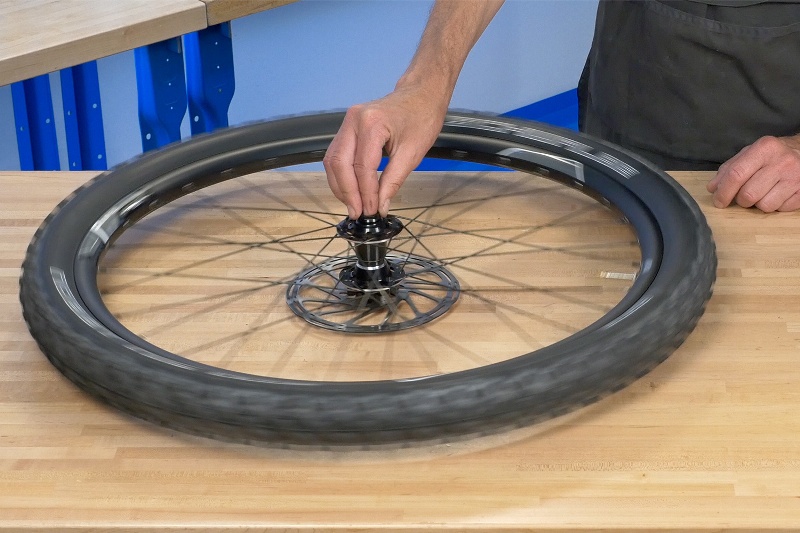 Loosen the fixing nuts first. After that, it will be possible to completely remove the wheel.
Loosen the fixing nuts first. After that, it will be possible to completely remove the wheel. An important rule that must be taken into account: the removal of the tire from the disk should begin from the place that is located opposite the spool, and then move along the rim. Using this method, you can remove the tire from the disk within half an hour.
To separate these elements from each other, it is better to use a prepared steel angle. The rounded edge will avoid tire and rim damage. It should be driven in so that there is a space between the tire and the wheel. After mounting blades, disassembly is performed.
This allows for precise operation without damaging the camera.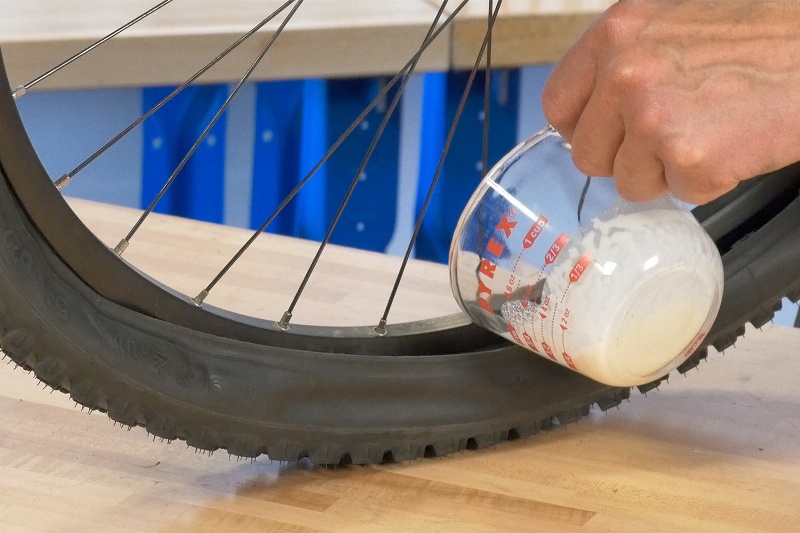 It is removed only after the tire is completely removed on one side. At the end of the process, the driver will need to place a new tire and repeat all the steps in reverse order.
It is removed only after the tire is completely removed on one side. At the end of the process, the driver will need to place a new tire and repeat all the steps in reverse order.
Due to the lack of a chamber in the wheel, the tire is hermetically sealed on the rim and filled with air. In fact, she turns into a camera. The advantage of such tires is the slow process of pressure loss, which is characteristic of accidental punctures.
There are a lot of these wheels on the market today. This design allows you to fully control the car in this situation without losing control, and provides an opportunity to get to the nearest tire shop or home.
Skill is required to disassemble the wheel on the machine and not tear the rubber. All you need is a desire and a minimal set of tools at hand. The most difficult part of the process is pumping the wheel with air. This procedure is required. The tire needs to be in place. This requires a large volume of air, which is unlikely to be able to provide a mechanical pump or a car compressor.
[totalpoll id=”6725″]
The easiest way is to use ether and 10–20 g of gasoline. It is important to use a moderate amount of fuel for the process to be safe. When igniting ether and gasoline, the tire automatically jumps onto the hump wheel.
Important! The wheel must be inflated in parallel with the indicated process so that the tire does not come off.
With a tire changer, it is much easier to carry out all the necessary actions. In this case, a minimum number of tools is required.
Installing a tire on a hump wheelIf the beading is incorrect, the machine can tear the rubber or damage the rim. This must be taken into account when taking any action.
Using the tire changer, it is much easier not only to assemble the wheel, but also to inflate the tubeless tyre. A large volume of compressed air supplied at a fast pace will allow you to easily install the tire on the hump. This method is more correct when beading wheels, as it minimizes the risk of tire and rim damage, and also allows balancing after completion of work.